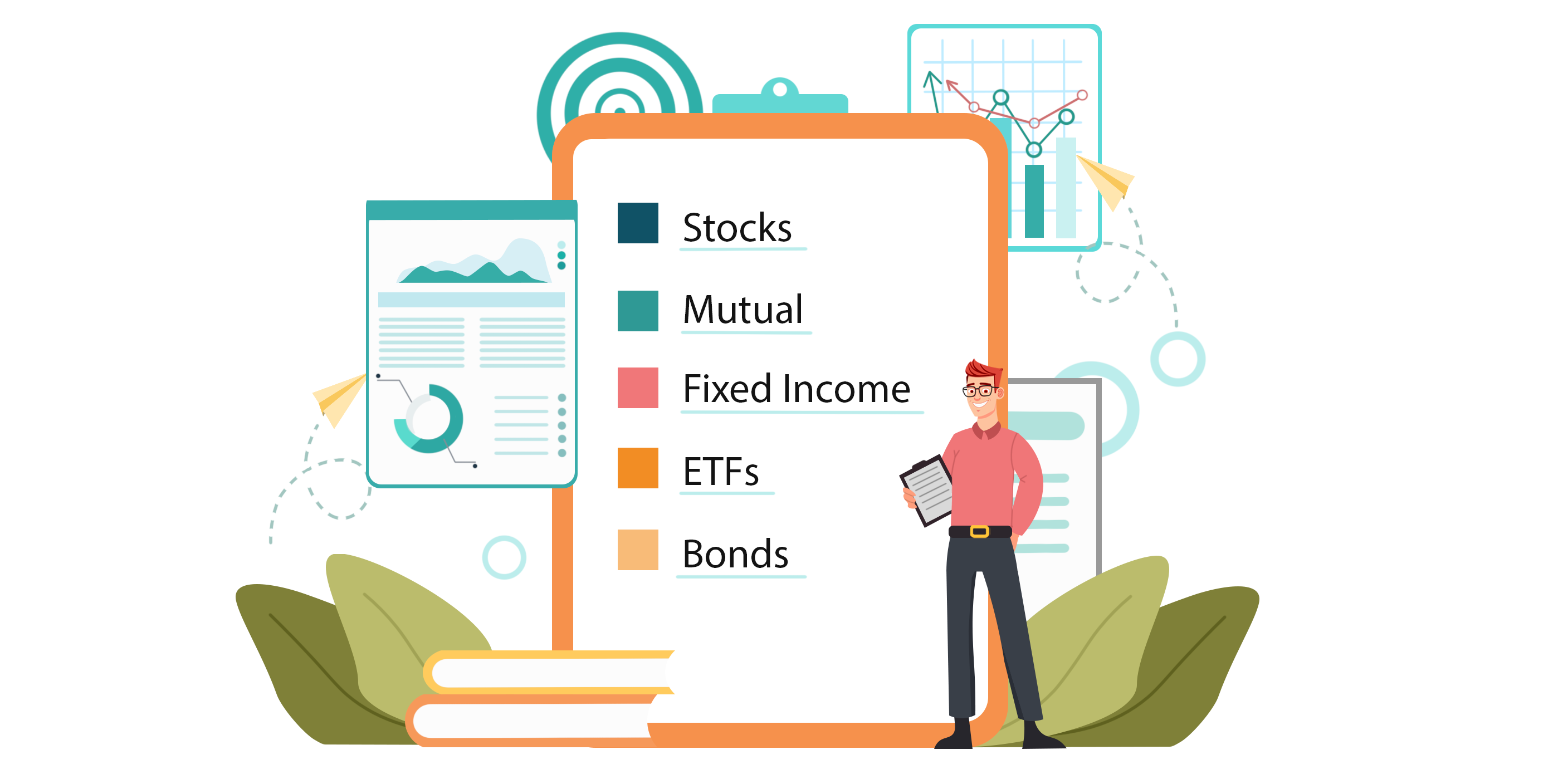
Investing is a means to generate more money, but it is also risky because you could lose it. Sometimes companies might go bankrupt or the stock market might go down. That's why it's important to be careful and have different kinds of investments, like stocks and bonds.
We also need to be aware of different types of risks, like when a company goes bankrupt or when the economy changes and it affects the value of our investments. But don't worry, there are ways to manage these risks and be safe when we invest our money.
When people want to invest their money, they want to make sure that they can make more money in the future. Sometimes bad things happen in the economy that can make all types of investments go down in value. Systematic risk is a type of risk that can affect all investments, even if you have many different types of investments. It's important to know about this risk because it can't be completely avoided. Systematic risk is like a big wave that affects all investments, no matter how careful or smart someone is about investing their money. This risk comes from things that can happen in the whole world, like big changes in the economy or problems between countries (which we call geopolitical risks). So, let's say there is a big problem in the world that affects the economy, like a recession where people are struggling to find jobs. In that case, almost all investments are affected and their values will drop, no matter what type of investment they are. It's like when a big wave comes and knocks everything down in the water. People need to be aware that systematic risk is a risk they can't avoid, but they can try to prepare for it by diversifying their investments (which means investing in different things to spread out the risk) and by being patient during tough times in the market.
When you give money to someone, there's a chance they might not be able to give it back. This is called credit risk. It is like when you lend money to a friend and they don't give it back. This can happen with bonds too. When people buy a bond, they are lending money to a company or government. The corporation or government guarantees to repay the funds with interest. But sometimes, they might not be able to pay back the money because they are having problems. This is called credit risk. It's more likely to happen with lower-rated bonds or loans because those borrowers might have more trouble paying back the money if things get tough.
Liquidity risk is when an investor has something they own, but they can't sell it when they really need or want to. This can be a problem because sometimes people need to sell their things to get money for important things like food, shelter, or emergencies. This can happen with different types of things people invest in. Stocks are usually easy to sell, but it depends on which company's stocks someone has. If they own stocks from a big company that lots of people buy and sell, they won't have much trouble selling them. But if they own stocks from a small company that not many people know about, it might be harder to sell them. They might not be able to find someone who wants to buy them, or they might have to sell them for a lower price than they wanted.
When you save money in a bank or invest in something, the amount of money you can earn in interest can change if the interest rates change. This is called interest rate risk, and it can make your investment worth less than what you originally paid for it. When interest rates go up, the value of some investments might go down. And when interest rates go down, some investments might go up in value. However, this risk is typically greater for some investments, such as bonds. This is so because interest rates and bond prices are tightly correlated. As a result, the value of a bond may fluctuate in response to changes in interest rates.
Idiosyncratic risk refers to the possibility that a particular investment may underperform in comparison to others due to specific reasons. For example, imagine a toy store that is doing really well because lots of kids want to buy toys. But if the toy store owner makes some bad choices and doesn't buy the right toys or doesn't treat customers well, then the toy store might not do as well as other stores even though the toy business is generally good. This kind of risk cannot be avoided and can happen to any investment.
It's important to know how risky an investment is before deciding to invest in it. This helps us make smart choices about our money. Investors need to know if an asset's risk profile fits their investment objectives. There are several different ways to measure risk, including standard deviation, beta, and stress testing.
Standard deviation is a way to measure how much an investment's performance has varied over time. It is like a ruler that helps us understand how much an investment's returns have gone up or down compared to its average return. If an investment's standard deviation is high, it means that its returns have varied a lot from its average return. For example, let's say that an investment has an average return of 7%. If its standard deviation is 10%, it means that some years it might go up by 10% or down by 10%, but over time, it will average out to around 7%. Investors can assess whether a portfolio's risk matches their risk profile by calculating standard deviation. The following equation can be used to compute standard deviation: Where: ri = actual rate of return ravg = average rate of return n = number of periods Standard deviation is a very useful statistical metric in finance but it has limitations. The biggest limitation is that it assumes that past performance is indicative of future performance, which is not always the case. It also assumes that the distribution of returns is normal, which is often the case with equity returns but not with all investments.
Beta is like a score that tells us how much a stock moves up and down compared to the whole stock market. A stock with a beta of 1.0 moves like the average stock in the market. If a stock's beta is more than 1.0, it moves more than the typical stock. If a stock's beta is less than 1.0, it moves less than the typical stock. Stocks with higher betas can be riskier because they move a lot more than the average stock. It's like riding a roller coaster that goes much faster and higher than other rides. It can be exciting, but it can also be scarier and riskier. So, when we invest, we need to be careful and think about how much risk we're comfortable taking. By comparing an investment's return to the market's return over a given time period, beta is calculated. This formula is used to compute it: Beta (β) = Covariance (Ri, Rm) / Variance (Rm) Where: Covariance = the measure of how much the return on the investment and the return on the market move together Ri = the return on the investment Rm = the return of the market, Variance = the measure of how the returns of the market vary. The good news is that the beta of particular equities can be obtained simply on any financial news website and is calculated automatically. However, the beta of a security portfolio must be determined using the aforementioned formula. Beta is a useful statistical measure because it takes into account the direction of returns, which means that it treats positive and negative returns differently. When security has a negative beta, it means that it moves in the opposite direction of the overall market.
Stress testing is a method of determining how well your investments will perform if anything catastrophic occurs in the world. For example, if there was a big recession or a war, it could make the value of your investments go down a lot. To find out how much they might go down, we create imaginary scenarios and see what would happen. One way we do this is by using a special computer program called the Monte Carlo Simulation. This helps us see all the different possible outcomes, even if we're not sure what will really happen. By doing stress tests, we can be better prepared for any risks that might come up and make smarter decisions about our money.
After measuring the risk of an individual investment or portfolio of assets, the next step is to manage the risk. There are different strategies for managing risk, including:
When you invest your money, there's always a risk that you could lose some or all of it. One way to keep your money safe when you invest is to not put all your money in one place. This is called diversification. It means spreading your money out across different types of investments, like stocks, bonds, and cash. If you put all your money into one type of investment and that investment doesn't do well, you might lose a lot of money. But if you spread your money out, then if one type of investment doesn't do well, you won't lose all your money. A solid rule of thumb is to avoid putting more than 10% of your money into any single investment.
While diversification is a fundamental risk management strategy, many portfolio managers use more advanced strategies to minimize volatility without sacrificing returns. For example, hedging is a widely used risk management technique. It involves taking offsetting positions in different securities to reduce risk. Buying put options against a long position is an example of hedging. Options trading allows investors to hedge against both long and short positions.
Active management involves actively managing a portfolio of assets to take advantage of short-term market opportunities as well as avoid risks. Active management requires regular review and adjustment of the portfolio to reflect changes in market conditions and economic outlook. For example, a manager of an active portfolio might reduce their positions in tech stocks and increase positions in healthcare stocks during weak economic conditions. This is because healthcare companies are relatively resilient to economic weakness. Active portfolio management is a risky strategy as it requires extensive research and real-time and accurate market news reporting. Even expert portfolio managers often fail to successfully manage risk and deliver market-beating returns following this strategy.
Risk is inherent to all investment products and can only partially be eliminated. The first step toward eliminating risk is measuring it using different statistical methods or more advanced modeling systems. Investors and portfolio managers can use a variety of risk management techniques, such as diversification, hedging, and active management, after assessing the risk. Depending on the financial objectives of individual investors and the investment goals of portfolio managers, a particular risk management method may be employed.
You will receive the information that help to do investments.
Note: Check the spam folder if you don't receive an email.
